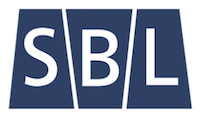When I’m teaching or mentoring prospective indexers, I focus primarily on term selection. Term selection involves the uniquely important indexing task of making decisions about what actually goes in the index. Unlike a search engine, we indexers don’t just put every mention of every term in the index. Being able to discern what is important, as well as including both obvious terms and more semantically subtle subject topics, is probably the most important aspect of what I call “indexer mind.” Without the ability to go beyond what some of my colleagues call the “low-hanging fruit” in a text to capture the “aboutness” of what the author is writing, it becomes extremely difficult to produce a quality (concise and comprehensive) index.
Term Selection Traps
Most beginning indexers fall into one or both of these mechanical indexing traps:
- Outlining (main headings for just the most general topics; for example, of chapters with subheadings for subtopics within the chapter, and that’s it. No reposting of substantive subtopics as main headings)
- Picking up all visible names, subject nouns and noun phrases that seem to be related to the overall book subject
In the first case, we don’t have enough detailed information at main heading level (where the user scans first). In the second case, we’re just as bad as a search engine with no significance logarithm at all. The poor user is sent to all sorts of disappointing page numbers for a given topic because the indexer refused to distinguish between significant and trivial mentions.
Both of these traps come from thinking of term selection as a mechanical exercise in finding words or short phrases (or names) that aren’t totally insignificant (like “the,” “for” or other functional words), but not looking at the surrounding text to understand it and see if it actually provides substantive information about the term, name, or phrase.
Answering the Signficance Question
A more useful approach to term selection to serve the main purpose of an index (to bring together scattered discussion of significant topics in a text), is to figure out what the author is actually writing about. What are their main and minor theme topics? What topics are repeated but using different terms that are related or even synonymous? And even, what implicit terms (not even mentioned in the text) might be useful to readers?
I think of this as a “studying the book for a course” approach. A good indexer seeks to understand a text (even a cookbook or other seemingly practical or technical text) in order to provide the index user with the best opportunity to find the location of the specific information they seek. If you were highlighting a book to study, you certainly wouldn’t highlight every single mention of an isolated term, would you? And if you relied only on a bird’s-eye view of the book’s table of contents, you’d have trouble passing the end-of-course text. Same with indexing. Show the user where the meat is in the text, especially where discussion is scattered (history books are standard examples of texts that don’t gather everything on one topic in one place).
Here’s a great example from one of my mentoring situations. The mentee took a look at a 40-page text (artificially short for indexing, but you’ll get the idea) on geography education guidelines to be passed down to states from the federal level. One of the terms that showed up in the text was “human environment.” The primary direct reference was to the human environment’s interaction with nature. Here’s what the mentee came up with (“f” stands for information in a figure):
human environments, 9, 10f, 18
I chose to take a more comprehensive subject-analysis view of this one. It’s about the subject, not just the term “human.” Related cultural and societal terms can all go under this topic:
human environments
diffusion of phenomena, 30
diversity of, 7, 28
diffusion of phenomena, 30
diversity of, 7, 28
economic activities, 28, 29–30, 31
effect on natural environments, 23–26
features and patterns, 18, 20
interactions among systems in, 22
model relationships, 7
movement of people, 9, 10f, 30–31
nature’s impact on, 21, 22–24
processes, 20
spatial dynamics, 27–28
Finding the “About”
All of the above information was in the text and related to the human environment, but the mentee did not make the connections. If you want to be a good indexer, you’ll need to train yourself to see the text at a deeper semantic level rather than a superficial mechanical level.
This is why a lot of us indexers love to read; because we do want to know what the book is all about when we are done. 🙂






Leave a Reply